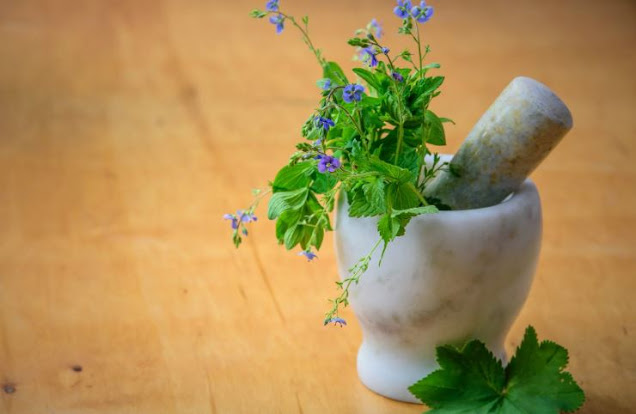If you have decided that you want to build your own kitchen herb garden, then you must first decide which herbs to grow in it. Once you do this, you can start preparing your own herb garden plan and start looking at things like herbal kits or herbal seed catalogs. To make things as easy as possible for you, I have written this article to teach you about "three things that every herb gardener needs to know" before purchasing herb plants or seeds.
Also read: Real history behind yog
A beginner guide to home herb Garden
How many types of herbs do you want to plant in your kitchen herb garden? Most people, when they are setting up their own herb garden, choose about 5 or 6 types of herbs. But a small to medium-sized herb garden can contain 20 to 30 different types of herbs. However, I suggest you start with something and increase the number of herbs as you gain experience.
 |
| Herbs at Home |
If you are interested in a specific type of herb (for example garlic), there are plenty of resources available to help you research your chosen herb and understand how to cultivate it successfully. But, if you spend too much time on research, you will never set up your own kitchen herb. This article will help make your research work easier by teaching you about the different types of herbs that you can choose to grow in your own herb garden, and give you some ideas as to what they can do in your home. It can be used in and around.
1. The main class of herbs
Herbs, like other plants that you will be familiar with, can be placed in three different categories - annual, perennial and biennial. Annuals such as basil, cilantro, and summer savory die on the first frost, and they need to be planted as seeds every year (or if you buy plants from the nursery). Sage and winter savory are perennials and can survive cold temperatures. They will return from year to year. Finally there are biennial herbs. They make their leaves in the form of flowers and seeds during the first growing season and then during the second season. After this they die.
2. Tips on growing herbs in your garden
Biennial herbs such as angelica and parsley can be sown in the garden in late spring. Before you sow your seeds, you have to prepare the soil first, until its texture is right. Next wet it very slightly and plant seeds in shallow rows. Finally, sprinkle a thin layer of soil over the top and lower it.
Some herb seeds are difficult to sow because they are so fine. The secret to sowing them evenly is to mix them with very fine dry sand (such as children's play sand). Sprinkle sand and seed mixture on your seed-bed and then cover with soil as described above. Another good tip to keep the soil moist during the germination period is to cover your herb seedbed with a wet sack, woven cloth, or absorbent paper.
3. Different Uses of Herbs
Herbs are often placed in categories that describe how they are most commonly used. The culinary herb is possibly the most popular for the herb garden. They can be used in a wide range of different cooking methods. Herbs like Garlic, Chives, Thyme, Sage, Basil, Moram, and Savory have strong flavors. They are often used in a wide variety of food, but only in small amounts (but this of course depends on personal taste preference).
Aromatic herbs are grown for the smell of their flowers or foliage. Aromatic herbs such as peppermint, lavage, and rosemary contain essential oils that can be used in perfumes, scents, and toilet water. Some aromatic herbs such as lavender are used as complete plants. They are dried and put into muslin bags and then used to scent linen and clothing around the house. Another popular use of these herbs is potpourri, a blend of dried, aromatic herbs, used to impart a fragrant aroma to homes. You can often come in a decorative wooden bowl of Potapuri containing lavender, lemon action, marjoram, and mint. There are plenty of herb combinations that can be used to make potpourri. If this is something you want to try, you will enjoy making herbal mixtures.
Some herbs are also used to promote health and aid healing. These are called medicinal herbs. There are plenty of stories and examples of how herbs are used for medicinal purposes, some of them going back to ancient Egyptian times.
Current medical knowledge still recognizes that some herbs are beneficial for health, but many claims made for medicinal herbs are now considered over-rated. If you decide to use herbs from your kitchen garden for medicinal purposes, you need to take precautions. While many herbs are completely harmless, others. There are many uses in your herb garden. For example, mint can be used to make mint tea or can be used in cooking. It can also be used in the garden for pest control!
I hope this article has given you some ideas that will stimulate your interest in herbs and enable you to choose the kitchen garden herbs that will be of most use to you.
Comments
Post a Comment